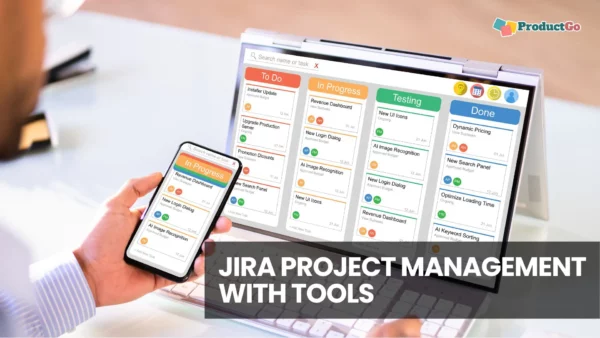In today’s fast-paced, technologically driven world, effective project management is more critical than ever. With so many activities, shifting priorities, and tight deadlines, a reliable project management tool is more than a luxury; it’s a need. This is where Jira comes into play.
The Atlassian product Jira is a solution rather than just a tool. It has completely changed the way we manage projects, particularly when it comes to Agile methodologies. This blog delves deeply into the fundamentals of Jira, examining its key functions, the value of using it to manage Agile projects, and its compatibility with different Agile frameworks. We will also look at how integrating extra tools like ProductGo, AgileBox, and TeamBoard can improve your Jira experience and advance your project management abilities.
What is Jira?
Though Jira is much more than just a project management tool, it is a powerful tool nonetheless. Originally intended to be used as a software development issue and bug-tracking system, Atlassian created this flexible platform. It has developed into a powerful project management tool over time that works with many approaches, especially agile.
Jira’s history started in the early 2000s when Australian startup Atlassian set out to make software developers’ problem-tracking and project-management processes more effective. With its name derived from the Japanese word for Godzilla, “Gojira,” Jira set out to dominate the project management industry, and it was successful.
Why Managing Agile Projects with Jira is Essential?
Juggling a bunch of to-dos in an agile project can get messy fast. Tasks keep changing, priorities shift, and deadlines feel like a moving target. That’s where Jira comes in, like a superhero sidekick for project managers.

Think of it as a central hub for your team. Tasks become clear, organized on visual boards like Kanban or Scrum. Everyone instantly sees what needs doing, who’s working on it, and progress at a glance. Boom! Transparency and everyone’s on the same page. No more chasing teammates for updates or wondering what’s stuck. It’s like magic but with way fewer capes and tights.
→ Related content: Organizing Product Backlog: How To Do It
Supported Jira Agile Frameworks
Agile is an umbrella term for several iterative and incremental software development methodologies. Though there are other approaches like Lean, Extreme Programming (XP), and Crystal, Scrum and Kanban are the most widely used.
Scrum is a framework that helps teams work together. It encourages teams to learn through experiences, self-organize while working on a problem, and reflect on their wins and losses to continuously improve.
Kanban is all about visualizing your work, limiting work in progress, and maximizing efficiency (or flow). Kanban boards in Jira help teams visualize their workflow for a more flexible form of planning.
Though Scrum and Kanban are the most widely used, Jira’s flexibility enables it to be integrated with other approaches such as Lean, which prioritizes waste reduction, or XP, which emphasizes engineering practices.
Enhancing Jira Project Management Experience with Additional Tools
Jira is an extremely powerful platform in the field of agile project management. However, its functionality and efficiency can be significantly enhanced by integrating it with third-party tools. These add-ons, which offer extra features and functionalities tailored to the unique requirements of agile teams, are meant to enhance Jira’s capabilities. Let’s investigate how using ProductGo, AgileBox, and TeamBoard can improve your Jira workflow.
1. ProductGo – Agile User Story Map, Roadmaps & Persona for Jira
ProductGo is a tool that can help you create user story maps, roadmaps, and personas for agile projects. User story mapping is a technique for visualizing the user journey and prioritizing features that provide the most value to your customers. Personas are fictional characters who represent the needs and goals of your target users.
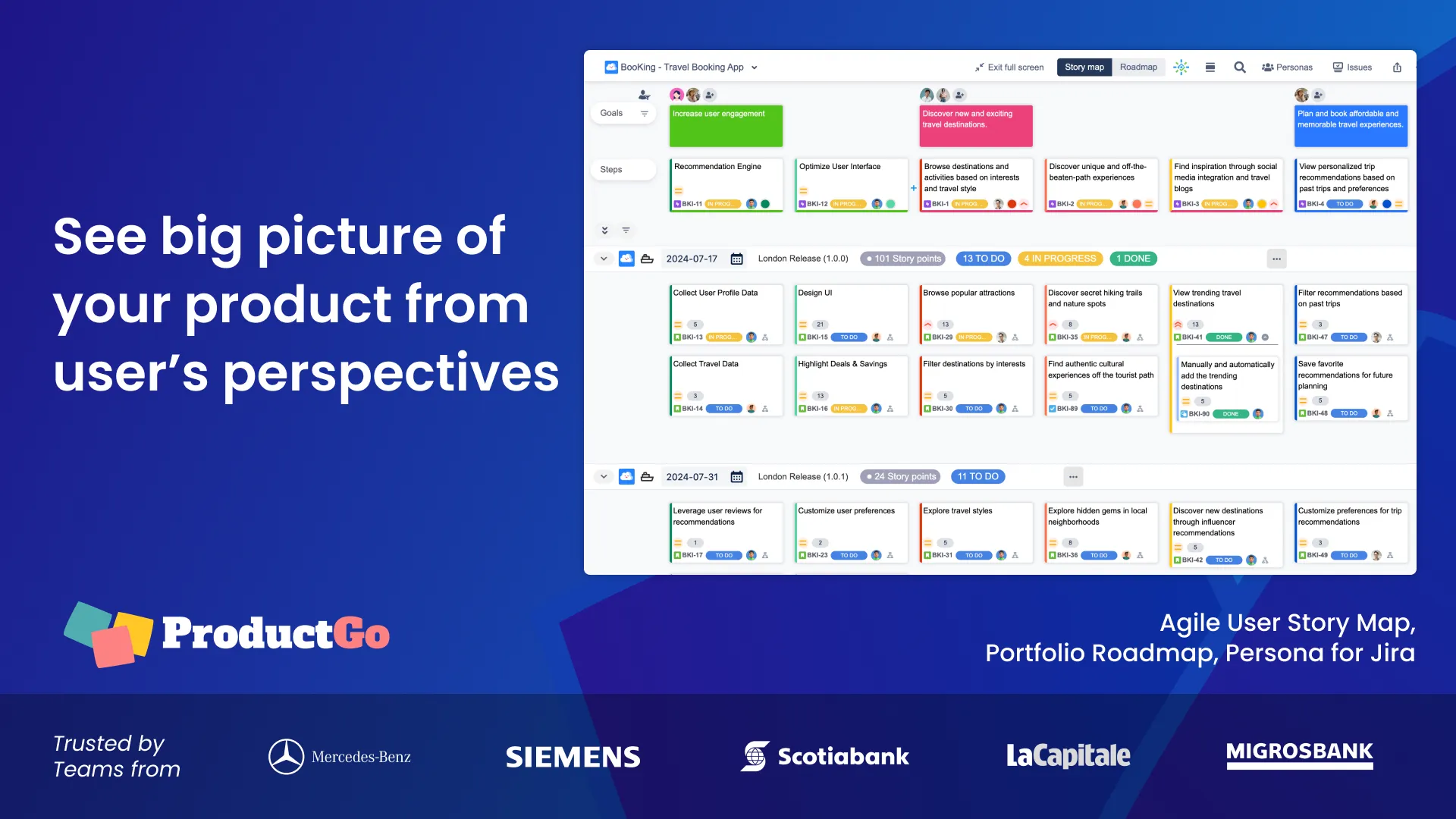
ProductGo – Agile User Story Map, Portfolio Roadmap & Persona for Jira
ProductGo allows you to create user story maps, roadmaps, and personas in Jira and link them to epics, stories, and tasks. You can also work with your team and stakeholders on these artifacts and receive real-time feedback.
→ Try out: Agile User Story Map, Roadmaps & Persona for Jira
Features:
- Agile User Story Mapping: It provides an interactive user story map that aligns with your Jira issues, helping in better backlog management and sprint planning.
- Roadmaps: Create dynamic roadmaps that link directly to Jira issues, ensuring that your planning and execution are perfectly synced.
- Persona Management: Develop detailed customer personas directly in Jira, aiding in more user-centric product development.
2. AgileBox – Planning Poker, Agile Retrospectives, Daily Standup for Jira
AgileBox is a tool for Jira that allows you to run agile ceremonies such as planning poker, retrospectives, and daily standups. Planning poker is a technique for estimating the effort and complexity of tasks using a consensus-based approach. Retrospectives are meetings that allow you to reflect on what went well and what needs to be improved in your sprint. Daily standups are brief meetings that allow you to communicate with your team about what you did yesterday, what you’re doing today, and any roadblocks you’re facing.
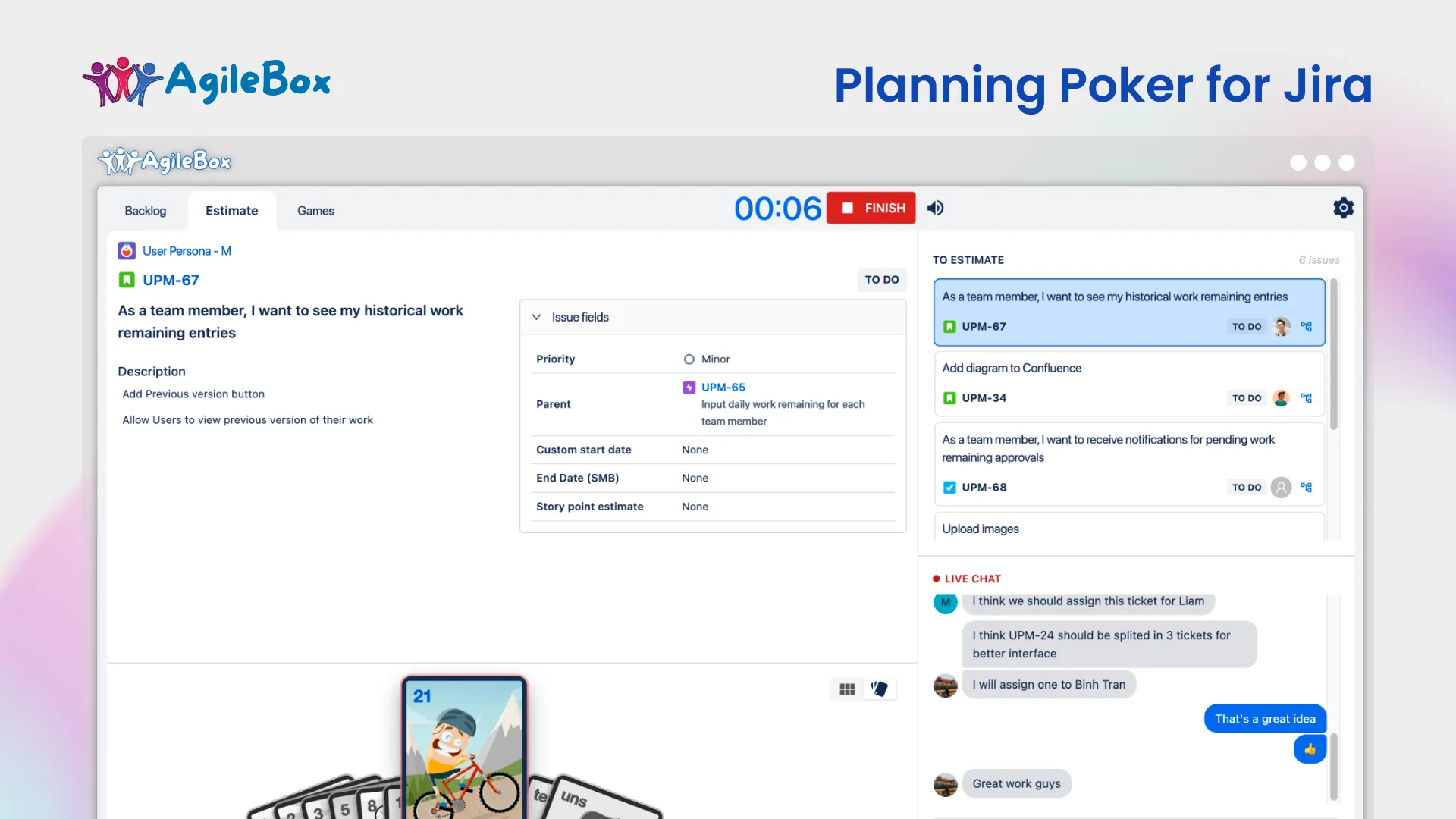
AgileBox allows you to perform these ceremonies in Jira without leaving your project board. You can also invite team members and stakeholders to attend these sessions and participate in real-time.
→ Try out: Planning Poker, Agile Retrospectives, Daily Standup for Jira
Features:
- Planning Poker: Facilitate estimation sessions with a digital planning poker tool, integrating seamlessly with Jira’s issue tracking.
- Agile Retrospectives: Conduct effective retrospectives with a variety of templates and tools, encouraging continuous improvement.
- Daily Standup Tools: AgileBox offers tools to make daily standups more efficient, helping teams stay focused and aligned.
3. TeamBoard – Resource Planning, Project Management, Gantt Chart for Jira
TeamBoard is a tool for managing Jira resources, projects, and timelines using a Gantt chart view. A Gantt chart is a visual representation of your project schedule that displays the start and end dates of your tasks, their dependencies, milestones, progress bars, and critical path.
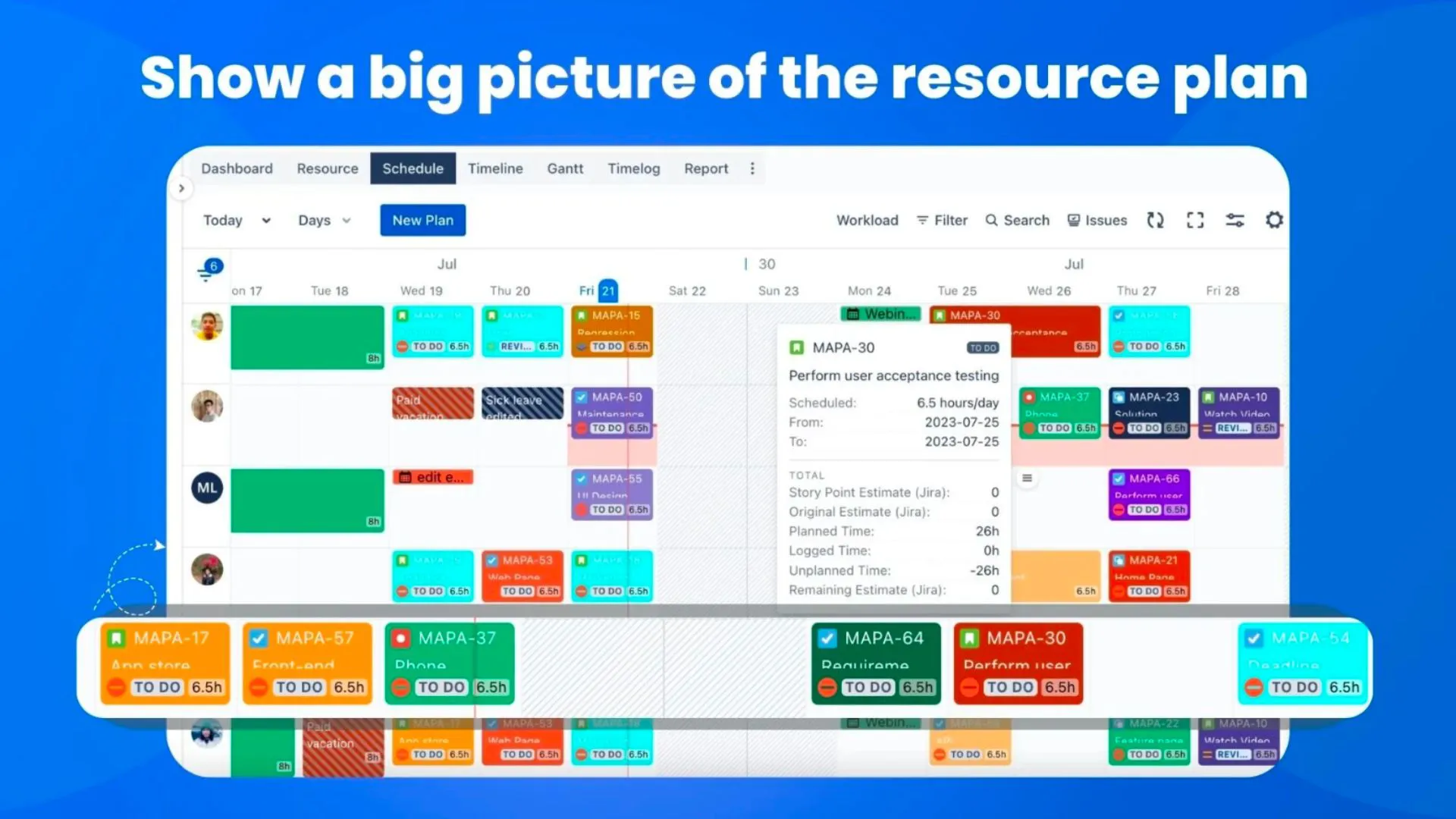
TeamBoard allows you to create Gantt charts for Jira projects and view all of your tasks in one place. You can also assign resources to tasks, monitor their availability and workload, and distribute their capacity across multiple projects.
→ Try out: Resource Planning, Project Management, Gantt Chart for Jira
Features:
- Resource Planning: Manage team resources effectively, ensuring that workloads are balanced and deadlines are met.
- Enhanced Project Management: Offers a suite of project management tools including timeline views and task dependencies.
- Gantt Chart Integration: Visualize project schedules with Gantt charts, integrated with Jira tasks for real-time tracking and adjustments.
4. AssetIT – Asset Management for Jira, JSM, ITSM
AssetIT stands out from other project management tools due to its focus on Jira asset management. Unlike general project management plugins, AssetIT excels in streamlining workflows related to assigning and tracking physical and digital assets. This ensures that the right devices and resources are allocated to the appropriate projects efficiently.
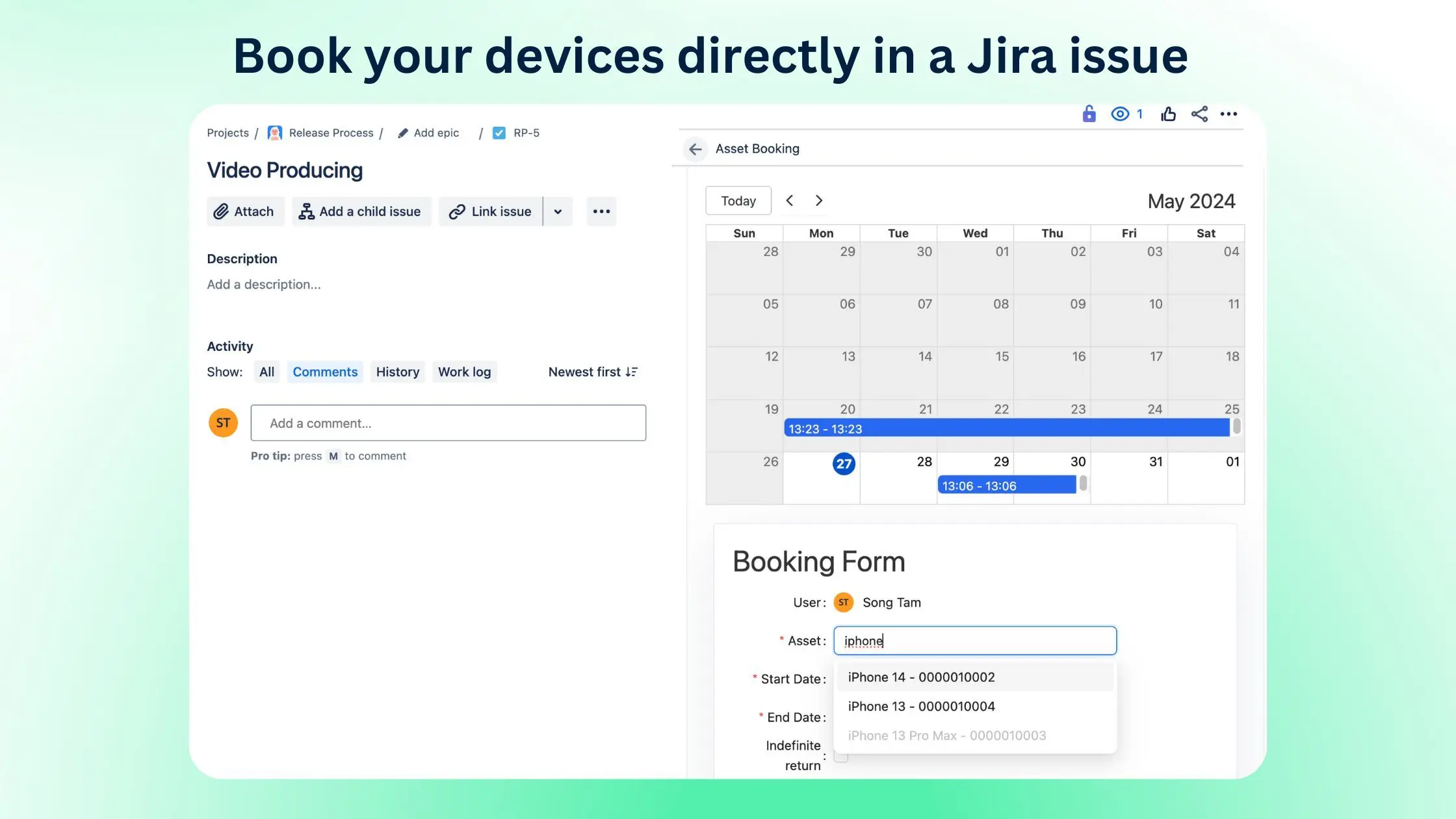
With various features serving the purpose of IT asset tracking and management, AssetIT allows project managers to keep tabs, moderate, and control a company’s resources easily. Asset booking directly in a Jira issue cuts down all the manual work and switching back and forth processes between too many apps simultaneously. Features like viewing item details, assigning devices within the projects, sending out custody verification, etc. make AssetIT the ultimate choice to smoothen the project management progression.
→ Try out: AssetIT – Asset Management for Jira, JSM, ITSM
5. Routemap – Release Planning & Sprint Planning for Jira
Routemap for Jira is an outstanding solution to all your planning needs using timeline roadmaps and Kanban boards. Taking advantage of Jira project management itself, Routemap enhances the overall experience by combining tasks and Jira issues into one unified portfolio roadmap or Kanban.
If your team mainly works on version releases, you can use Routemap’s Releases Timeline to manage product releases for multiple projects on the same timeline roadmap. Additionally, you can use milestones to mark important events during your release timelines.
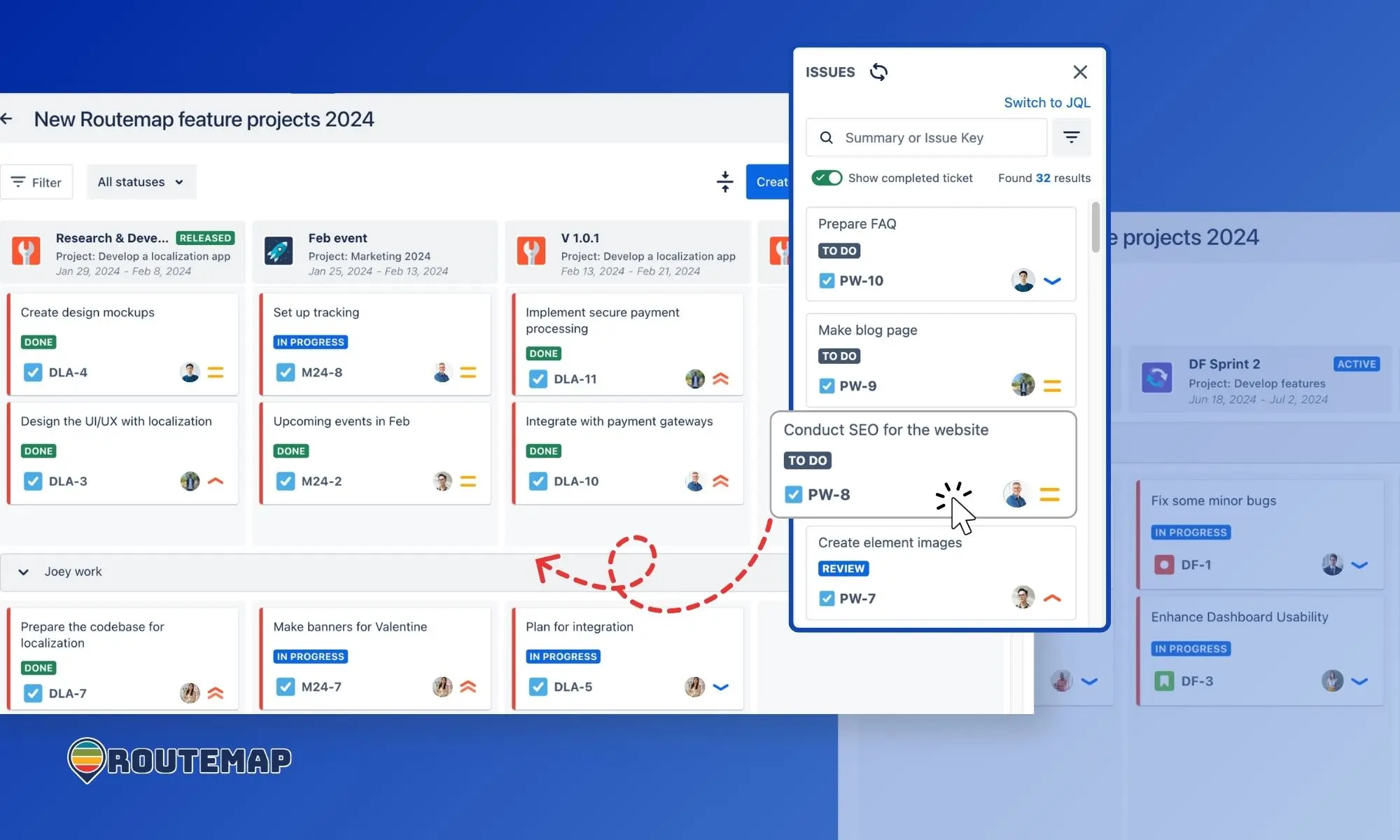
On the other hand, you and your team can opt for the Sprint Kanban feature if you are working on the Jira backlog. What this does is visualize all the issues you have in the backlog and make sprint planning seamlessly on a Kanban board. Moreover, you can also create new sprints for each project, add new issues, and close sprints directly when completed.
Final Words
Jira is a powerful project management tool, particularly for Agile methodologies. However, when utilized with tools such as ProductGo, AgileBox, and TeamBoard, it reaches its full potential. These integrations enhance Jira’s functionality, efficiency, and usability, transforming it into a comprehensive project management ecosystem rather than just a tool.
As we navigate the complexities of project management, keep in mind that tools like Jira and its extensions are about more than just task management; they are also about empowering teams, encouraging collaboration, and driving projects to success. Adopting these tools will not only streamline your project management processes but will also boost your team’s performance to new heights.

